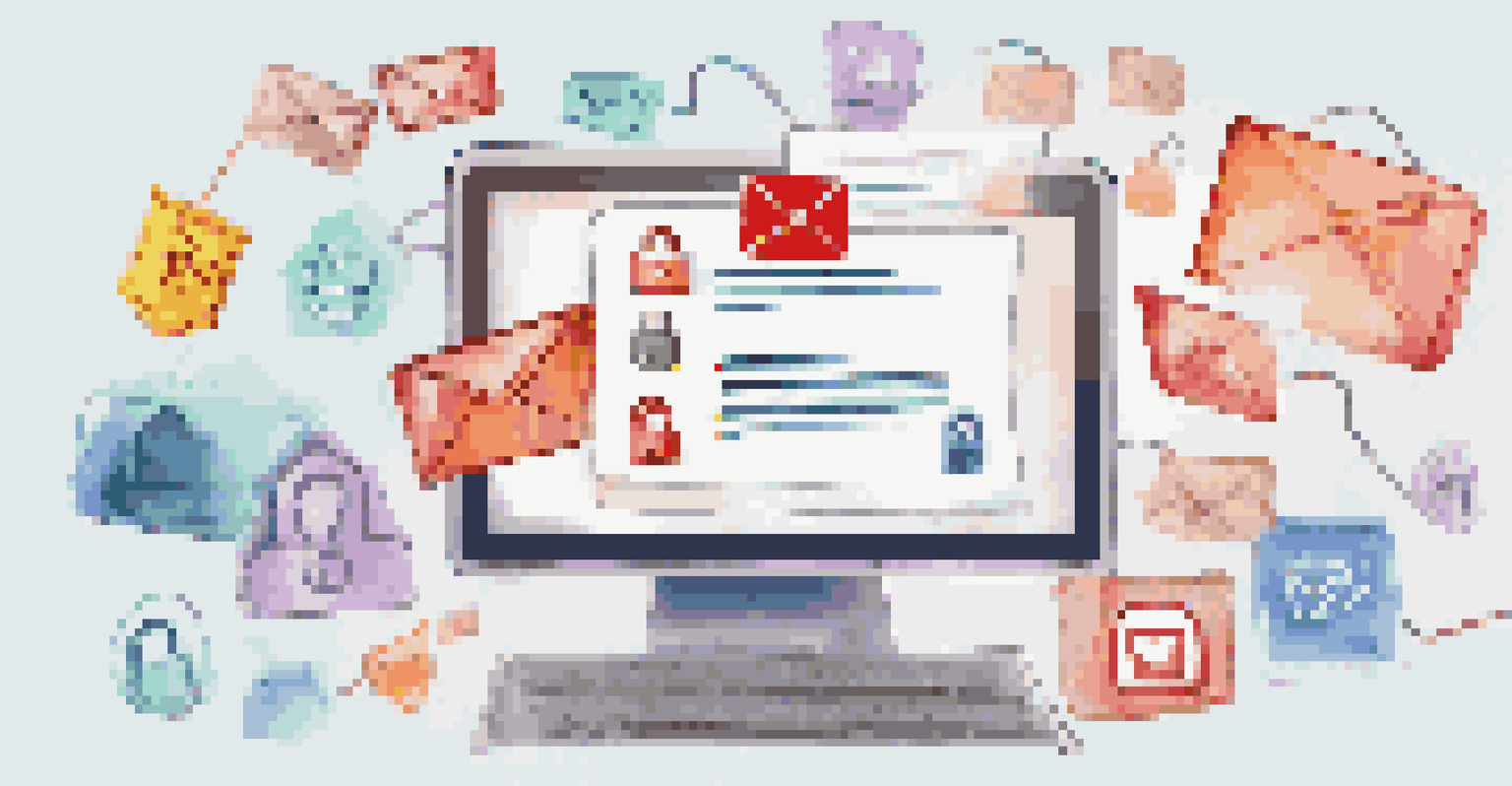Email Security: Protecting Against Spam and Phishing Attacks

Understanding Email Security: Why It Matters
In today's digital age, email security is more important than ever. With countless personal and professional communications happening via email, protecting this information from unauthorized access is crucial. A single security breach can lead to serious consequences, including identity theft and financial loss.
The only way to keep your email secure is to stay informed and vigilant.
Email security encompasses various practices and technologies designed to safeguard your inbox. This includes protecting against spam, phishing attacks, and other malicious threats. With cybercriminals constantly evolving their tactics, staying informed about potential risks is key to maintaining email safety.
By prioritizing email security, you can significantly reduce the chances of falling victim to these threats. It's not just about keeping your inbox clean; it's about ensuring your sensitive information remains private and secure.
Recognizing Spam: What to Look For
Spam emails are unsolicited messages that clutter your inbox, often promoting products or services you didn't ask for. Recognizing spam is essential for keeping your email tidy and your information safe. Look out for emails from unfamiliar senders, awkward language, and enticing offers that seem too good to be true.

A common tactic used by spammers is to create urgency, pushing you to act quickly. For example, you might receive an email claiming your account will be suspended unless you click a link immediately. Always take a moment to evaluate such messages before taking any action.
Importance of Email Security
Protecting your email is crucial to prevent unauthorized access and safeguard sensitive information.
Using spam filters can help automatically categorize and divert these unwanted emails. However, understanding the characteristics of spam can empower you to manually identify and delete them before they clutter your inbox.
Phishing Attacks: The Growing Threat
Phishing attacks are deceptive attempts to steal sensitive information by masquerading as trustworthy entities. These attacks often come in the form of emails that look legitimate, prompting you to click on links or provide personal details. It's crucial to understand that even the most convincing emails can be dangerous.
Email is the most commonly used method of communication, but it's also one of the most susceptible to threats.
A typical phishing tactic involves using a familiar company name or logo, making the email seem authentic. For instance, you might receive an email that appears to be from your bank, requesting you to verify your login information. Always scrutinize the sender's email address and look for red flags.
To counteract phishing attempts, it's essential to stay informed about the latest scams. Regularly educating yourself and your team about these threats can help you remain vigilant and protect your information effectively.
Best Practices for Email Security
Implementing best practices for email security can significantly reduce your vulnerability to spam and phishing attacks. Start by using strong, unique passwords for your email accounts. Passwords should be complex, incorporating letters, numbers, and symbols, and should be changed regularly.
Enabling two-factor authentication (2FA) is another effective measure. This adds an extra layer of security by requiring a second form of verification, such as a text message code, before granting access to your account. Even if your password is compromised, 2FA can prevent unauthorized access.
Recognizing Spam and Phishing
Identifying spam and phishing attempts can help keep your inbox organized and secure from threats.
Lastly, always keep your operating system and software updated. Updates often contain important security patches that protect against known vulnerabilities. By following these best practices, you can create a more secure email environment.
The Role of Spam Filters in Email Security
Spam filters are a crucial component of email security, designed to automatically detect and block unwanted emails. They work by analyzing incoming messages and identifying characteristics typical of spam or phishing attacks. This can save you time and hassle by keeping your inbox cleaner.
However, spam filters aren't perfect. Occasionally, legitimate emails may end up in the spam folder, while some spam might slip through the cracks. Regularly checking your spam folder ensures you don't miss important messages while helping the filter learn and improve its accuracy.
Combining spam filters with your vigilance creates a robust defense against unwanted emails. Together, they can significantly enhance your email security, allowing you to focus on what truly matters.
Educating Yourself and Others on Email Security
An informed user is one of the best defenses against email threats. Regularly educating yourself and your colleagues about email security best practices can create a culture of awareness. Consider holding training sessions or sharing resources that highlight the latest trends in spam and phishing tactics.
Encouraging open discussions around email security can help individuals feel more comfortable reporting suspicious messages. This proactive approach fosters a supportive environment where everyone feels responsible for maintaining security.
Best Practices for Safety
Implementing strong passwords, two-factor authentication, and regular updates can significantly enhance your email security.
By staying informed and sharing knowledge, you can significantly reduce the risks associated with email communication. Remember, email security is a collective effort, and every user plays a vital role.
Conclusion: Staying Vigilant in Email Security
In conclusion, email security is an ongoing journey that requires constant vigilance. By understanding the threats of spam and phishing, recognizing red flags, and implementing best practices, you can protect your personal and professional information. The digital landscape is ever-evolving, making it essential to stay informed about the latest security measures.
Regularly reviewing your email security practices can help you adapt to new challenges. Whether it's updating passwords, refining spam filters, or educating others, every effort counts. The more proactive you are, the safer your email communication will be.

Embrace a culture of security and encourage those around you to do the same. Together, we can create a safer email environment for everyone.